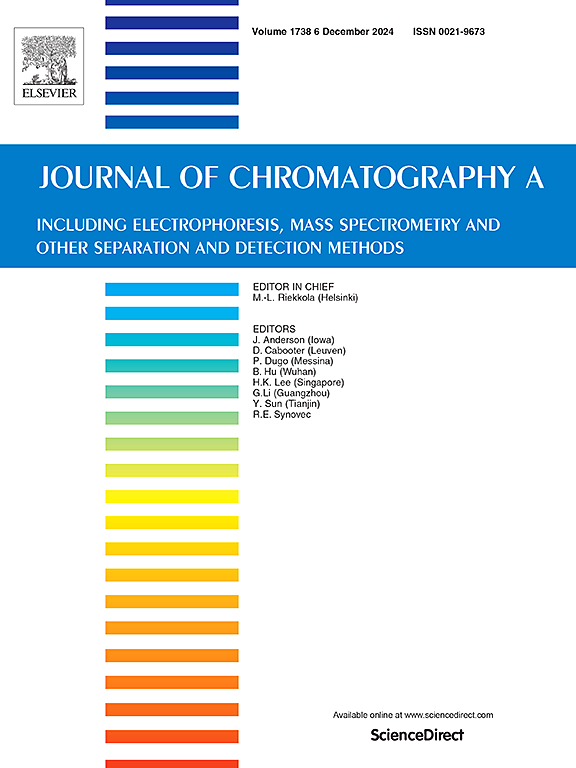Adsorption and separation of zirconium and hafnium from sulfate media by a conveniently synthesized (2,4,4-trimethylpentyl)(2-methylpropyl)phosphinic acid functionalized Merrifield Resin: A combined study of experiments and DFT calculations
IF 3.8
2区 化学
Q1 BIOCHEMICAL RESEARCH METHODS
引用次数: 0
Abstract
A novel extractive resin grafting (2-methylpropyl)(2,4,4-trimethylpentyl)phosphinic acid groups through N atoms (marked as Mer-N-POOH-272), which is superior to most of the reported resins for hafnium(Hf) selective separation from zirconium (Zr), was synthesized and structurally characterized by FT-IR, SEM-EDS and XPS. The adsorption and separation behaviors of Mer-N-POOH-272 for Zr and Hf in sulphate media were investigated. The desorption behaviors of the adsorbed Zr and Hf by HCl, H2SO4, NaOH and Na2CO3 solutions were studied. Density functional theory (DFT) calculations were conducted to reveal the adsorption mechanism. Mer-N-POOH-272 preferentially adsorbs Hf over Zr in H2SO4 media, and the maximum Zr/Hf separation factor (βHf/Zr) reached to 6.5 0.3. The Zr and Hf adsorption by Mer-N-POOH-272 fit pseudo-first kinetic model and Langmuir isothermal adsorptionc model. It is the intraparticle diffusion that probably determines the adsorption rate. The Zr and Hf adsorptions onto Mer-N-POOH-272 belong to monolayer adsorption, and their experimental maximum adsorption amounts were 16.8 0.8 mg/g and 29.2 ± 1.0 mg/g, respectively. Sulfuric acid solution of 4.5 mol/L selectively desorbed the adsorbed Zr, and NaOH and Na2CO3 solutions of ≥ 1.0 mol/L efficiently desorbed the left Hf. The DFT calculations show it is the two O atoms of -POOH in Mer-N-POOH-272 that probably interact with Zr or Hf ions during adsorption in H2SO4 media, and Hf has lower adsorption energy than Zr, which explains the selectivity of Mer-N-POOH-272.
求助全文
约1分钟内获得全文
求助全文
来源期刊

Journal of Chromatography A
化学-分析化学
CiteScore
7.90
自引率
14.60%
发文量
742
审稿时长
45 days
期刊介绍:
The Journal of Chromatography A provides a forum for the publication of original research and critical reviews on all aspects of fundamental and applied separation science. The scope of the journal includes chromatography and related techniques, electromigration techniques (e.g. electrophoresis, electrochromatography), hyphenated and other multi-dimensional techniques, sample preparation, and detection methods such as mass spectrometry. Contributions consist mainly of research papers dealing with the theory of separation methods, instrumental developments and analytical and preparative applications of general interest.
 求助内容:
求助内容: 应助结果提醒方式:
应助结果提醒方式:


